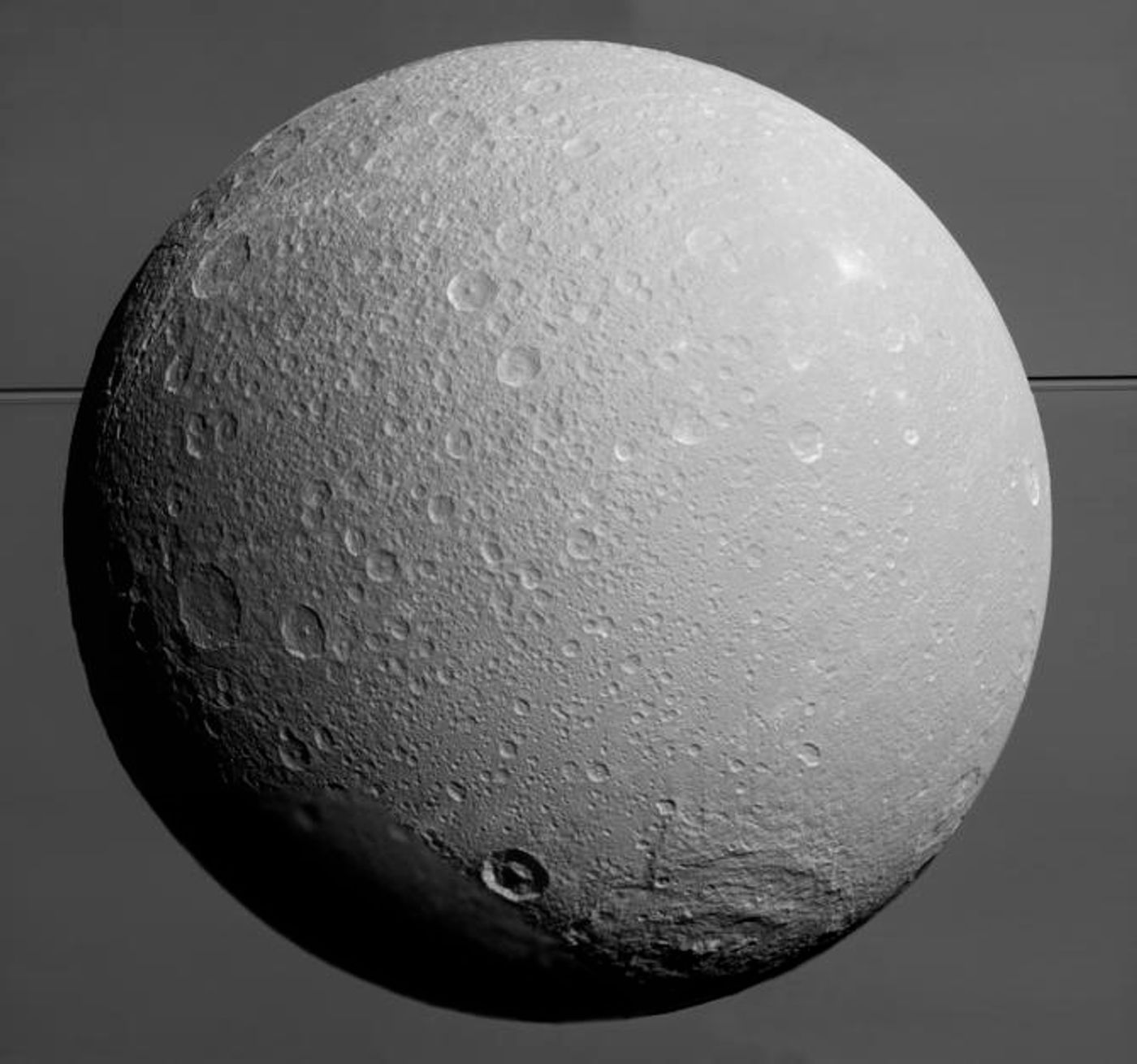Here's What Saturn's Moon Dione Looks Like Up Close
NASA’s Cassini Solstice Mission, which involved sending a spacecraft to Saturn and spending quite a bit of time there to examine the moons and rings of Saturn has proven to be quite the success.
Over the course of 11 years, NASA’s Cassini spacecraft has been exploring the contents of Saturn’s mysterious moons and rings, snapping high detail photographs of them as it flies by them.
Among the most recent images taken on August 17th, which illustrate a super high-detail photograph of Saturn's moon Dione, which hasn’t been photographed in this high of quality since 2011, is the one shown below. NASA notes that at the time of the photograph, Cassini was just a mere 295 miles above the surface of the moon, which compares to when the spacecraft was just 60 miles above the surface in 2011.
"I am moved, as I know everyone else is, looking at these exquisite images of Dione's surface and crescent, and knowing that they are the last we will see of this far-off world for a very long time to come," said Carolyn Porco, Cassini imaging team lead at the Space Science Institute, Boulder, Colorado. "Right down to the last, Cassini has faithfully delivered another extraordinary set of riches. How lucky we have been."
In the photograph, you can see not only the high quality surface of Dione itself, but you can see Saturn’s rings in the background. Dione, just like our own moon, is merely a space rock with impact craters all over it.
"We had just enough time to snap a few images, giving us nice, high resolution looks at the surface," said Tilmann Denk, a Cassini participating scientist at Freie University in Berlin. "We were able to make use of reflected sunlight from Saturn as an additional light source, which revealed details in the shadows of some of the images."
This is the last time that Dione will be pictured for a very long time, as the Cassini spacecraft is scheduled to run out of fuel in 2017, where it will then be sent on a suicide mission directly into Saturn’s atmosphere, where high heat, pressure, and other conditions will destroy the spacecraft.
Before then, however, Cassini will head out to get a closer look at Saturn’s another one of Saturn’s moons, known as Enceladus, throughout October, and then will head out further to get a closer look at Saturn’s rings with what final amount of fuel the spacecraft does have leftover.
More of the high-detail photographs taken by the spacecraft can be seen here (processed) and here (unprocessed).
You can also watch the video below to get a glimpse of what the Cassini mission has captured in the Saturnian realm of space over the course of its mission:
Source: NASA









